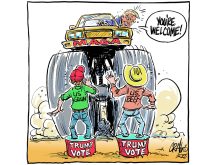IN THE day-to-day work of trying to track agricultural policy development in this politically complicated country, there are four primary sources a reporter typically mines for information: federal politicians; provincial politicians; bureaucrats at both levels; and the industry.
At one time or another on most policy files, people in most of these layers are involved. Get the right people gabbing and sooner or later, the details of discussions, plans, disputes and agreements come out. A few of them even make it into print.
However, it isn’t a simple matter of being told what is happening and writing it. Often, each level has its own version of the truth.
Read Also

Finding the sweet spot where ag science meets ag culture
Soon, many will look at practices such as seeding marginal acres to forage, growing cover crops and livestock integration and ask why they didn’t do this sooner.
It may be a case of the clash of different perceptions, different agendas or even conflicting memories.
If official history is, as one critic has argued, merely the lies about the past we collectively agree to believe, sometimes reports of political developments are merely a recounting of the most plausible interpretations of conflicting possibilities.
A short tale from the belly of the policy-making beast will serve to illustrate the point and the dilemma for those who make their living trying to figure out what’s going on.
Shortly after a recent conference call between federal agriculture minister Lyle Vanclief and provincial counterparts, rookie Ontario minister Steve Peters reported back to his farm leaders that Ottawa is considering an industry demand that farmers be able to get into proposed new safety net programming by promising with a “letter of credit” from the bank or credit union that they will be good for their premium once payments are triggered.
It would save farmers from requiring thousands of dollars of investment in a program that may never trigger. It would be a major concession, opposed by federal officials.
A reporter’s later call to Vanclief’s office confirmed that indeed, the idea was being reconsidered as a way to win broader support for the agricultural policy framework.
Industry reaction was solicited. The federal flexibility was lauded.
Then came a message back from one of the industry sources. He had been talking to a senior bureaucrat at Agriculture Canada and was “told that the letter of credit idea is not on the table.”
What the …?
The simple explanation might be that Vanclief was trying to sound flexible on the off chance that one of the APF dissident provinces – Saskatchewan and Ontario – would sign and let the program be launched. Implementing the hint would come, or not come, later. Another possibility is that the minister meant it but his bureaucrats remain unconvinced and they are the ones who design the detail.
An activist federal minister from a government past once told the story about the early days when he instructed a senior bureaucrat to quickly pull together a program to get money to the countryside.
“This is how it is done,” replied the official who disagreed with the ministers’ directive. “That is how it WAS done,” replied the minister. “Do it different.”
He spent the next years battling his bureaucrats and their guerilla tactics.
A promise to do something in a system as multi-layered and complicated as Canada’s cannot always be taken to the bank.
And each layer can give remarkably different interpretations about what is being said and what is being done.














